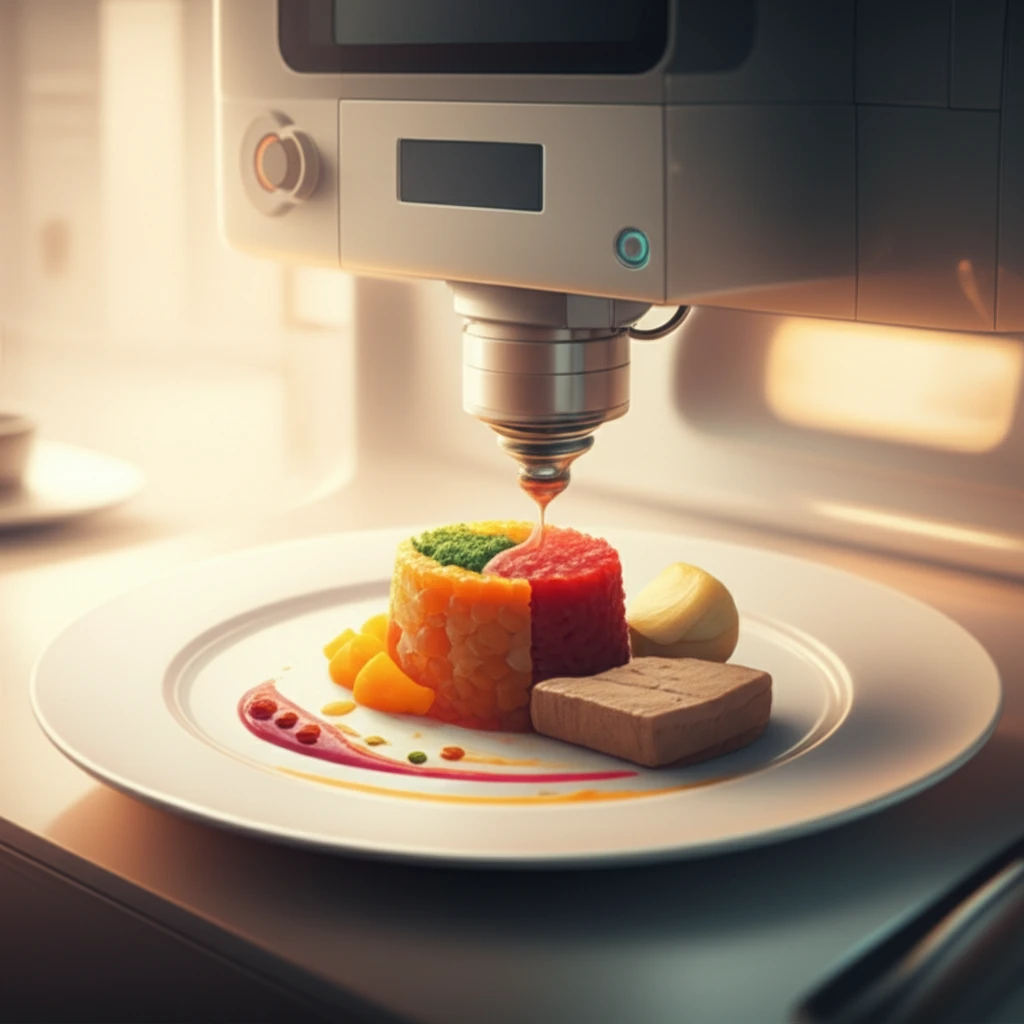
Beyond the Plate: How 3D Food Printing is Revolutionizing Elderly Care
"Discover how cutting-edge 3D printing technology is creating personalized, nutritious, and easily digestible meals, transforming the landscape of geriatric care."
As we age, our bodies change, and so do our nutritional needs. For many elderly individuals, eating can become a challenge due to various factors such as difficulty swallowing, reduced appetite, or specific dietary requirements. Traditional meal preparation methods often fall short in addressing these individual needs, leading to malnutrition and a decreased quality of life.
Enter 3D food printing – a groundbreaking technology that is transforming the way we approach elderly care. By creating personalized, nutritious, and easily digestible meals, 3D food printing is revolutionizing the dining experience for older adults, offering a beacon of hope for improved health and well-being.
This innovative approach not only caters to specific dietary needs but also enhances the appeal and enjoyment of food, making meal times something to look forward to rather than a chore. Let’s delve into the fascinating world of 3D food printing and explore its potential to revolutionize elderly care.
What is 3D Food Printing and How Does It Work?

3D food printing is an additive manufacturing process that uses food materials as “ink” to create customized food products layer by layer. Imagine a regular inkjet printer, but instead of ink, it uses edible pastes, gels, or powders to construct intricate and personalized dishes.
- Preparation of Food Ink: Raw ingredients are liquefied and mixed with a suitable binding agent to create a printable food material. This can include pureed fruits and vegetables, protein sources, and carbohydrate bases.
- Designing the Meal: Using specialized software, a 3D model of the desired meal is created. This design takes into account the individual’s nutritional needs, dietary restrictions, and preferences.
- Printing the Food: The food ink is loaded into the 3D printer, which then precisely deposits the material layer by layer according to the digital design.
- Post-Processing (if needed): Some 3D-printed foods may require additional processing, such as baking, steaming, or cooling, to achieve the desired texture and flavor.
The Future of Food is Here
3D food printing is more than just a novelty; it's a practical solution that enhances the dining experience, improves nutritional intake, and ultimately contributes to a higher quality of life for our aging population. As technology advances, we can anticipate even more sophisticated and accessible 3D food printing solutions, paving the way for a future where personalized nutrition is within everyone's reach. For elderly individuals facing dietary challenges, 3D food printing is a game-changer.
